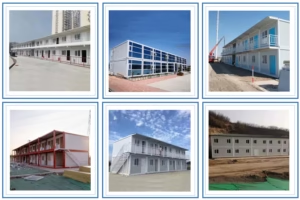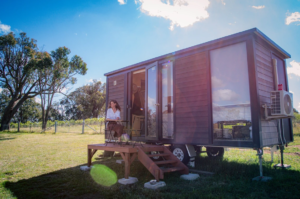What Are Shipping Container Homes?
What Is the Price of a Container House?
The price of your shipping container house will vary greatly depending on container housing specifics such as the location, the number of containers used, the home’s size, as well as the materials selected for the house’s interior and exterior. A single-container in home usually sells between $80,000, whereas multi-container homes can go from $80,000 to $250,000. Don’t forget to consider other expenses like land and labor since they are also a part of the container home budget.
Container houses are achievable, are they not?
Yes, container houses are cheaper relative to standard homes, but their prices still depend on the container home’s material, design, and square footage. Container homes are fairly affordable due to the drastic reduction in material and construction cost when compared to traditional homes. To further reduce costs without sacrificing quality, used shipping containers in good condition can be purchased.
How durable are homes made from shipping containers?
Manufacturers purposefully design containers to be durable because they need to withstand harsh conditions while transporting goods over long distances. A container home with good care can last from twenty five to thirty years. Nevertheless, rust is a problem one must worry about so using rust resistant paint along with proper drainage is a must to improve the lifespan of the home. Besides, even if the metal starts to corrode, its possible to swap out the destroyed metal parts without affecting the structural soundness of the container home.
How Durable Are Shipping Container Homes?
Manufacturers design shipping containers to endure harsh conditions while transporting goods across long distances, which makes them highly durable. With proper maintenance, a container home can last between 25 to 30 years. However, rust is a common concern, so it’s essential to apply rust-resistant paint and ensure proper drainage to extend the home’s lifespan. Even if the metal starts to deteriorate, builders can maintain the home’s structural integrity by replacing damaged sections.
What are the options for insulating a container home?
One problem faced when constructing a container house is the insulation issue because thin steel walls do not provide much room for insulation. You can either choose building in or building out. If you build out, you place an insulated wall on the outside and preserve the container’s initial look. Otherwise, you can place walls inside the container to insulate it. This option takes some space, but it saves living area. Insulation foam, cotton, wool, and cork are the most popular options. Cork offers additional benefits – it is soundproof and fireproof.
Is it possible for shipping container houses to withstand harsh climates?
Due to the strong steel structure of the containers, the shipping container houses can withstand harsh weather conditions. These houses are designed to sustain high winds, heavy snow, and even earthquakes when properly fortified. However, like in other buildings, the home will need insulation to control the temperatures in hot and cold conditions as well as during severe weather. When in colder regions, insulation is crucial to keep the heat in and avoid condensation.
Who Is Endless Container and Why Are They Important?
This award-winning mobile container home company is ideal for long-term stays and off-grid living. Endless Container specializes in mobile container houses. They have set a new standard for off-grid living by selling container homes that are equipped with necessary utilities like plumbing and electrics already installed, eliminating the burden of additional renovations. The container homes can effortlessly cater to the client’s needs because they are easily customizable. Uniting the two worlds of functionality and aesthetic. Users are able to see and enjoy breathtaking landscapes through large panoramic windows and the structure responds beautifully to the surrounding environments, costing no effort when it comes to the maintenance of the house. The architects made sure contemporary design is implemented while keeping functionality in mind. As a result, this beautiful architectural piece is incredibly outfitted with modern smart home utilities and a self monitoring system. The home is energy efficient and requires little power for its rustic heating system. Because of these outstanding features, off-grid living has become manageable, comfortable and most importantly, sustainable.



